 |
| From: http://sccss.ca/wordpress2/diversity/ |
Reading also opens worlds.The more kids read about history, about the world, about differetypes of characters, people (even aliens, monsters, and who-knows-what-else), the more the understand the world around them. So of course books about diverse people, cultures, and opinions are really important. What is really nice to see is that kids with physical and mental handicaps are being added to the diverse community. The more we read about what their struggles are like (and how so many of them are in some ways just like others' struggles) the better our kids will understand and empathize.
Educators, in fact have directly influenced the publishing community. In 1968, for example, shortly after the assassination of Martin Luther King Jr., Harriet Glickman, a Los Angeles teacher wrote to Charles Schulz regarding the lack of diversity and integration in Peanuts (the most popular comic strip in the country). As a result, a black character named Franklin was introduced into the comic strip that summer and would become a regular member of the Peanuts gang. For more on the 'hows' and 'whys' of Franklin's story, there's a wonderful post at mashable.com you should read ("How a schoolteacher helped create the first black Peanuts character" by Christine Erickson).
Image: Peanuts copyright 1968 Peanuts Worldwide LLC
Image: Peanuts copyright 1968 Peanuts Worldwide LLC
Image: Peanuts copyright 1968 Peanuts Worldwide LLC
For kids' graphic novels, the path has been somewhat more challenging because publishers were concerned the actual images of kids with disabilities might be too frightening for some kids and parents/teachers wouldn't support them. In fact, Raina Telgemeier's Drama (where twins 'come out' that they're gay). That said, Drama has been a New York Times Bestseller and its success is opening doors for other graphic novels on diversity. Here are a few that are worth notice:
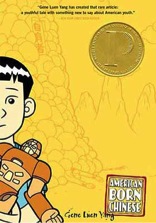 American Born Chinese by Gene Luen Yang is a 2006 National Book Award Honor Book for Young People's Literature, the 2007 winner of the Michael L. Printz Award honoring literary excellence in young adult literature, the winner of the 2007 Eisner Award, and a 2007 Bank Street Best Children's Book of the Year. In American Born Chinese, Gene Yang intertwines three stories - one of Chinese folklore about The Monkey King, one about a what it is like being Chinese in a predominantly white school, and the other about an assimilated Chinese boy. The best part is how these three stories meet at the end. For more on this graphic novel, suggesting paired readings, and teaching/discussion suggestions, please visit Using Graphic Novels in Education: American Born Chinese.
American Born Chinese by Gene Luen Yang is a 2006 National Book Award Honor Book for Young People's Literature, the 2007 winner of the Michael L. Printz Award honoring literary excellence in young adult literature, the winner of the 2007 Eisner Award, and a 2007 Bank Street Best Children's Book of the Year. In American Born Chinese, Gene Yang intertwines three stories - one of Chinese folklore about The Monkey King, one about a what it is like being Chinese in a predominantly white school, and the other about an assimilated Chinese boy. The best part is how these three stories meet at the end. For more on this graphic novel, suggesting paired readings, and teaching/discussion suggestions, please visit Using Graphic Novels in Education: American Born Chinese.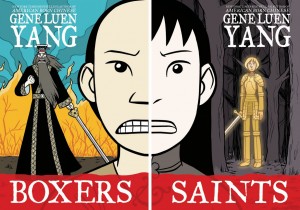 |
 |
Dragons Beware! by Rafael Rosado and Jorge Aguirre is about a girl who just wont fit the mold - she wants to get dragon who ate her father's leg and his legendary sword. As we read on, however, we realize that as usual, life (and in this case Claudette's quest) is not as simple as it seems. This book is wonderful fun about a spunky tomboy we cant help but love.
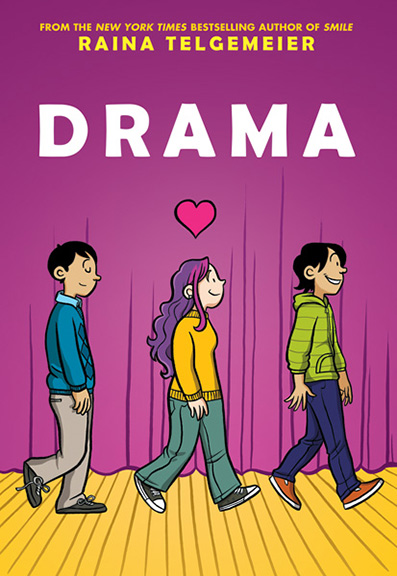
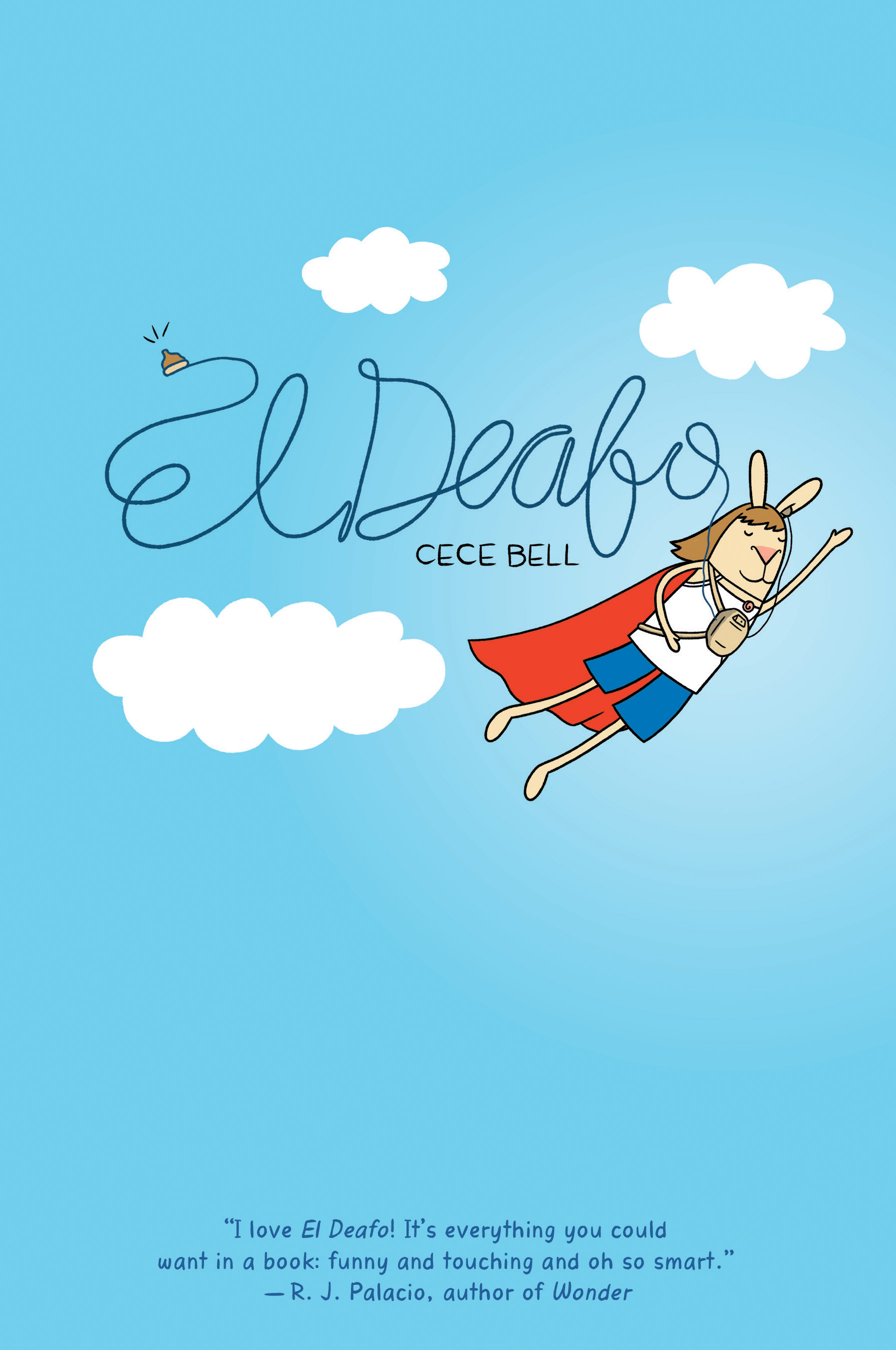 Drama by Raina Telgemeier While Drama has received numerous honors and starred reviews (YALSA's Top Ten Graphic Novel for Teens; NPR recommended it as one of the "Five Great Summer Reads for Teens"; Publishers Weekly Best Book of 2012; Washington Post Best Book of 2012; New York Times Editors' Choice and the Stonewall Book Award - to name a few) it was one of the most frequently challenged books in America in 2014. Strangely, while being challenged for being 'sexually explicit,' the story is set in a middle school and has no sex at all. The book, all about life in middle school has a diverse cast of characters and its story centers around the kids in the drama club. For more on this graphic novel, suggesting paired readings, and teaching/discussion suggestions, please visit Using Graphic Novels in Education: Drama.
Drama by Raina Telgemeier While Drama has received numerous honors and starred reviews (YALSA's Top Ten Graphic Novel for Teens; NPR recommended it as one of the "Five Great Summer Reads for Teens"; Publishers Weekly Best Book of 2012; Washington Post Best Book of 2012; New York Times Editors' Choice and the Stonewall Book Award - to name a few) it was one of the most frequently challenged books in America in 2014. Strangely, while being challenged for being 'sexually explicit,' the story is set in a middle school and has no sex at all. The book, all about life in middle school has a diverse cast of characters and its story centers around the kids in the drama club. For more on this graphic novel, suggesting paired readings, and teaching/discussion suggestions, please visit Using Graphic Novels in Education: Drama.El Deafo by Cece Bell is a 2015 Newbery Honor Book, it has received starred reviews from Kirkus Reviews and Publishers Weekly and is sure to win additional awards by the end of the year. It's a wonderfully empowering, warm and honest graphic memoir about how Ms. Bell lost her hearing, what it was like to learn to lip read, how she struggled to fit in while wearing a huge, bulky hearing aid, and how she ultimately found her super powers. For more on this graphic novel, suggesting paired readings, and teaching/discussion suggestions, please visit Using Graphic Novels in Education: El Deafo.
 Little White Duck: A Childhood in China by Na Liu and Andrés Vera Martínez is a collection of eight moving stories based on Na Liu's childhood in China during the 1970's and 80's.
Little White Duck: A Childhood in China by Na Liu and Andrés Vera Martínez is a collection of eight moving stories based on Na Liu's childhood in China during the 1970's and 80's.Na Liu's personal story of life in China in the 1970's.
Lumberjanes by Grace Ellis, Noelle Stevenson and Brooke Allen is winner of the 2015 Eisner Award. It's about a diverse group of five friends, Jo, April, Mal, Molly and Ripley who are determined to have an awesome summer together despite the array of supernatural critters and bad guys who get in their way.
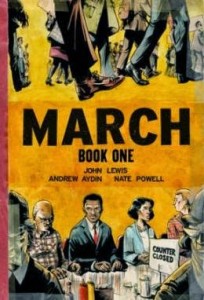 March by John Lewis, Andrew Ayden, and Nate Powell. It is a three book series. March chronicles Lewis life from childhood until the present and the role he and others played in the Civil Rights movement.For more on March: Book 1, suggesting paired readings, and teaching/discussion suggestions, please visit Using Graphic Novels in Education: March Book One. For more on March: Book 2, suggesting paired readings, and teaching/discussion suggestions, please visitUsing Graphic Novels in Education: March Book Two.
March by John Lewis, Andrew Ayden, and Nate Powell. It is a three book series. March chronicles Lewis life from childhood until the present and the role he and others played in the Civil Rights movement.For more on March: Book 1, suggesting paired readings, and teaching/discussion suggestions, please visit Using Graphic Novels in Education: March Book One. For more on March: Book 2, suggesting paired readings, and teaching/discussion suggestions, please visitUsing Graphic Novels in Education: March Book Two.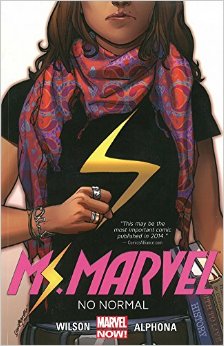 Ms. Marvel by G. Willow Wilson and Adrian Alphona is a Marvel rebook where in this more modern telling, Ms. Marvel is Kamala Khan, a 16-year old Muslim girl from Jersey City, New Jersey. It is a modern twist offering fun and diversity for tween readers and beyond, is a finalist for the first Dwayne McDuffie Award for Diversity, YALSA's Top Ten 2015 Graphic Novels for Teens and YALSA's 2015 Quick Picks for Reluctant Young Adult Readers. For more on this graphic novel, suggesting paired readings, and teaching/discussion suggestions, please visit Using Graphic Novels in Education: Ms. Marvel.
Ms. Marvel by G. Willow Wilson and Adrian Alphona is a Marvel rebook where in this more modern telling, Ms. Marvel is Kamala Khan, a 16-year old Muslim girl from Jersey City, New Jersey. It is a modern twist offering fun and diversity for tween readers and beyond, is a finalist for the first Dwayne McDuffie Award for Diversity, YALSA's Top Ten 2015 Graphic Novels for Teens and YALSA's 2015 Quick Picks for Reluctant Young Adult Readers. For more on this graphic novel, suggesting paired readings, and teaching/discussion suggestions, please visit Using Graphic Novels in Education: Ms. Marvel.
As always thanks for your visit.
Please leave your favorite kids' book or graphic novel dealing with diversity in the comments.




I havent really read anything that deals with diversity as in talk about it. This list has got amazing selection on the subject!
ReplyDeleteWhat an amazing way to talk to children about diversity.
ReplyDeleteCanada being multi-cultural, I've become a bit blind to others' races or ethnicities. However, it recently came to my attention that my grandchildren (who live in an area where there are few whites) have been bullied because of their colour (white). Time to get some of these books into that school district. It goes both ways!
ReplyDeleteNeed to link to this. Excellent. And the 2nd time today that I saw Franklin from Peanuts.
ReplyDeleteROG, ABCW
Terrific post...♪ http://lauriekazmierczak.com/deconstruction/
ReplyDeleteExcellent post! I too believe that reading does open up children's minds and helps them to get a balanced perspective.. Great list you have there.
ReplyDeleteBookmarking this one to be referred to again and again. Thanks for a wonderfully enlightening post.
ReplyDeleteChildrensbooks... although long time ago since i was a child, i still love to read books... whenever i have the change and am able to
ReplyDeleteMelody (abcw)
I thoroughly enjoyed this blog thanks for sharing.
ReplyDelete